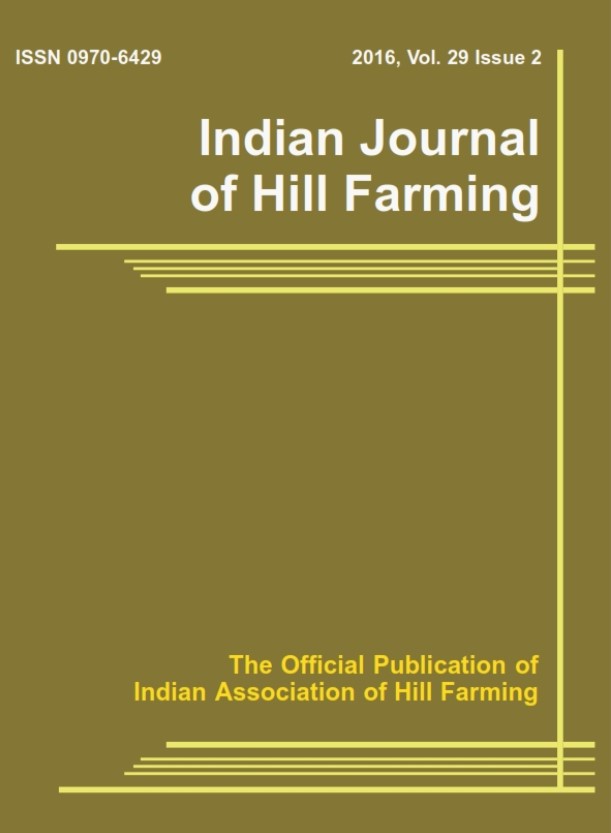Self-sustainable Intensive Integrated Farming System (IIFS) through crop, livestock and forestry interventions for sustainable productivity enhancement in Meghalaya
Keywords:
Agroforestry, crop production, Intensive Integrated farming system, Meghalaya, Productivity, SustainableAbstract
Farming system models are also necessary to achieve food security at household level particularly in rural areas of NEH region. To achieve food and nutritional security at household level and to develop sustainable food production system, it is advocated to include crops, animal, fishery, agroforestry and horticulture including many other location specific commodities for long term sustainable production. The productivity of five different IIFS models developed reveal that the fish productivity was recorded highest in Crop-fish-dairy-vermicompost-horticulture-hedgerow system. Among the livestock, daily weight gain was recorded highest in pig. Highest meat production was from crop-fish-poultrymultipurpose trees. The Crop- fish-dairy – mushroom vermicompost - horticulture hedgerow model was the most profitable followed by Crop-fish-poultry-multipurpose trees. Among these five models, Crop-fish-poultry-multipurpose trees model was the most profitable. While chicken-crop-fishduck- horticulture system was ecologically most viable. It was crop-fishdairy- mushroom -liquid manure-broom-horticulture-vermiculture system which was economically most viable with output/input ratio of 1.83(including labour cost) and 2.59 (excluding labour cost), respectively. In mid-hill conditions of Meghalaya, where low productivity and depleting soil fertility under the low input systems adopted by the farmers and there is need to develop this kind of IIFS models which can effectively recycle the available resources to increase the biomass production per unit area with appropriate farming practices for subsistence of the resource poor farmers as viable alternative to agricultural development in the region.




